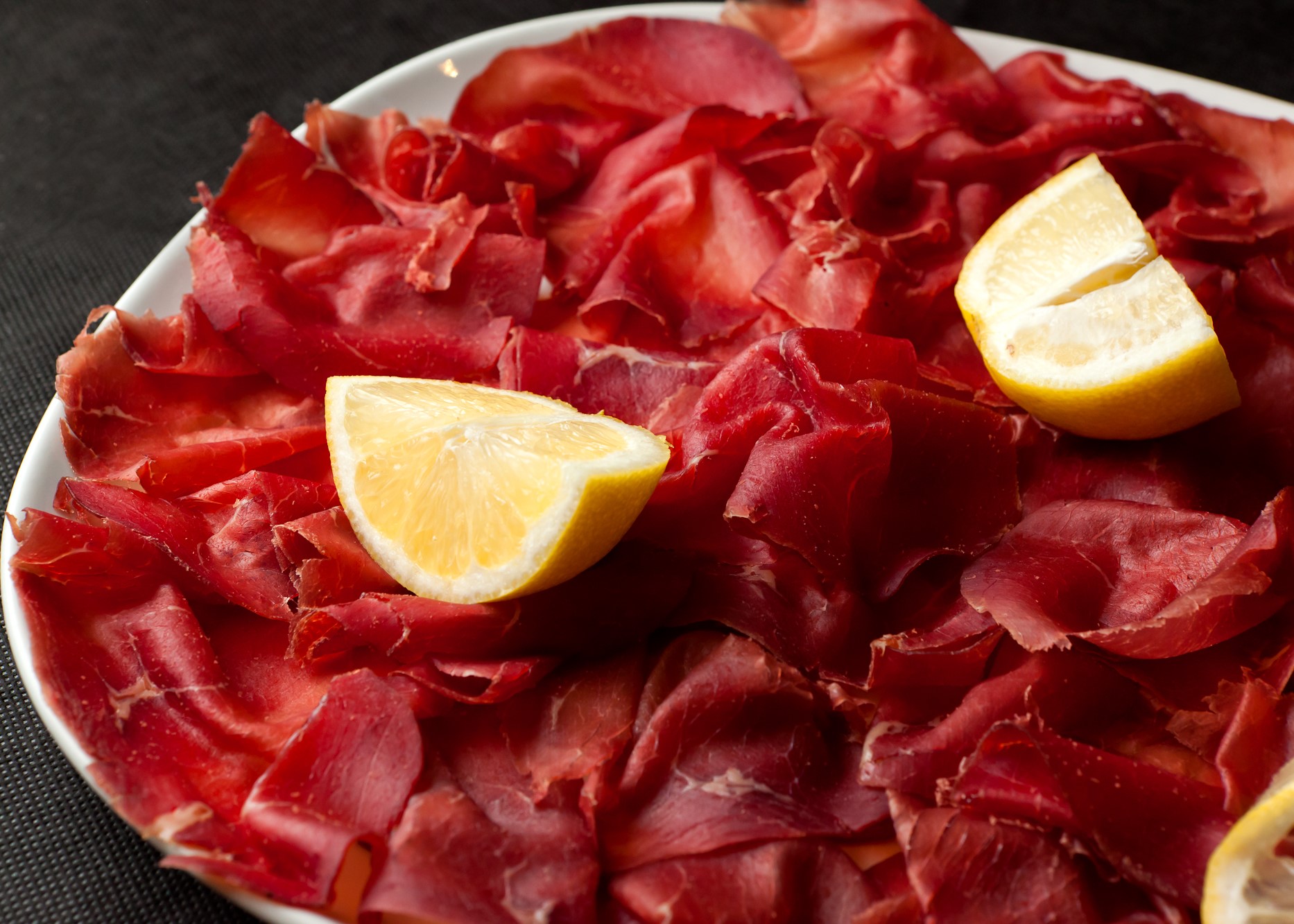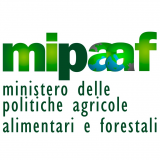
The earliest literary evidence of the production of Bresaola della Valtellina dates back to the 15th century, but the origin of this typical salami certainly pre-dates that. It is linked to the ancient tradition, common throughout the Alps, of preserving meat by salting and drying.
However, the cool, dry and well-ventilated climate of Valtellina allowed a storable product to be obtained through moderate salting and therefore allowing it to remain tender and slightly savoury.The production method, originally aimed merely at preservation, was perfected and enhanced over the centuries, thus refining the quality of the product, which is now sweeter and more tender and appetising than in the past.
The origin of the name may derive from the expression “salaa come brisa”, from the local term ‘brisa’, which indicated a heavily salted cattle gland; another theory traces it to the dialect term “brasa”, or embers, due to the custom of drying bresaola in rooms heated by braziers; finally, it could derive from the combination of “bre”, a name for a deer or wild ruminant, and “sal”, i.e. salted.
The production of dried beef in Valtellina remained confined to family circles until the first decades of the 1800s. During the 19th century, local production of the cold cut grew considerably and the product crossed national borders for export to neighbouring Switzerland and then gradually throughout the world.
The increase in production to meet the growing demand did not, however, compromise the original quality of the product or its typical characteristics. The establishment of the product rules completed the traditional skills of the producers and workers, guaranteeing the hygiene and quality of the product and the consistency of its organoleptic features.
The special climate of the valley is the main secret in the production of Bresaola della Valtellina, making it a unique and incomparable product. The fresh, clear air coming down from the snowy peaks of the Alps meets the mild Breva breeze on the valley floor, as it rises from Lake Como, creating an ideal climate for the gradual curing of Bresaola.
However, the climate is not the only determining factor. The appeal of this product lies in its production, since the processing stages are bound by precise rules, which have been elevated by tradition into genuine rituals, passed down from parents to children with passion and professional pride, like a sort of tradition within the tradition.The massaging of the meat during salting, and the right variations in temperature and humidity during the curing process, in precise moments and ways, are the legacy of a rural culture that is now a written part of the local tradition.
Since 1996, genuine Bresaola della Valtellina has been guaranteed by the community PGI (Protected Geographical Indication) trademark, used exclusively by producers in the Province of Sondrio that comply with the strict Production Rules.
Since 1998, the “Consortium for the protection of the Bresaola della Valtellina name” has been protecting and enhancing this refined product, promoting its image and safeguarding it against imitations and counterfeits.
The product
Bresaola della Valtellina PGI is distinguished by its organoleptic, chemical and physicochemical characteristics, which reveal its uniqueness when tasted. It has a typical uniform red colour, with a barely discernible dark edge on lean portions and faint whitish veins on fatty portions. The texture is firm and elastic, the smell is slightly aromatic and the taste pleasant and slightly savoury, but never sour. It is appreciated at its best in slices of about 1 mm thick.
Bresaola della Valtellina PGI is a food product high in protein and low in fat, with a very low cholesterol content. It also contains iron, zinc, phosphorus, potassium, B vitamins and vitamins E and PP. Due to its ideal nutritional value and easy digestibility, Bresaola della Valtellina is recommended by dieticians for all age groups, particularly children and the elderly, and for the nutritional needs of athletes.
Bresaola della Valtellina PGI is able to provide quality proteins, rich in amino acids that our body is unable to synthesise, and is particularly low in calories. Genuine Bresaola della Valtellina can be recognised by the community Protected Geographical Indication (PGI) trademark.
Production
To ensure the authenticity and preserve the quality characteristics of Bresaola della Valtellina PGI, all the processing stages must be conducted in the traditional production area specified in the Production Rules.
Bresaola della Valtellina PGI is a cold cut made from choice haunch tip, eye of round, topside, silverside and thick flank cuts from the leg muscle of cattle aged between 18 months and 4 years. The finest and most commonly used cut is the haunch tip. The process begins with careful selection of the raw materials and manual trimming of every single cut of meat to remove the external fat and tendons.
Salting is done dry, lasting 10-15 days, and is interrupted by periodic massaging to facilitate uniform absorption of the “curing solution”, composed of salt and natural seasoning. Wine and sugar may be added, as part of secret recipes rooted in closely guarded traditions, but nevertheless in compliance with the Rules.
Pepper, juniper berries, dried bay leaves, nutmeg, cinnamon and garlic are some of the natural herbs and spices used to give the product its characteristic mountain aroma, and their particular properties also have an antibacterial and antioxidant effect.
After the salting stage, the meat is stuffed into a protective casing; processing then continues with slow, gradual drying and curing for a period of between 4 and 8 weeks, depending on the size of the product. When curing is completed, the products conforming to the Production Rules are packaged and marketed under the protected name Bresaola della Valtellina PGI.
The local area
Bresaola della Valtellina PGI is produced exclusively in the Province of Sondrio, which is also known as “Valtellina” from the name of main valley running through it. Valtellina is a narrow region in the central Alps between Italy and Switzerland, corresponding to the catchment area of the river Adda.
It is bordered to the north and east by Switzerland (Graubünden) to the south by the rest of Lombardy and to the west by Trentino Alto Adige.It covers an area of just over 3,200 m2, at an altitude ranging from 200 to over 4,000 metres above sea level.Valtellina is different from the other mountain valleys due to its transversal rather than longitudinal position. It therefore runs from east to west between the Rhaetian Alps and the Bergamasque Prealps, which provide a well-protected central basin towards the south. Valtellina therefore has more sunlight during the day and a milder, less continental climate than other alpine areas at the same latitude, with mild, dry summers and winters.
Valtellina is also constantly ventilated, due to the temperature difference with nearby Lake Como. Due to its dry climate and moderate temperatures, even during the summer season, it provides the ideal conditions to allow the meat to cure gradually and properly.
By Consorzio per la tutela del nome Bresaola della Valtellina with MiPAAF



